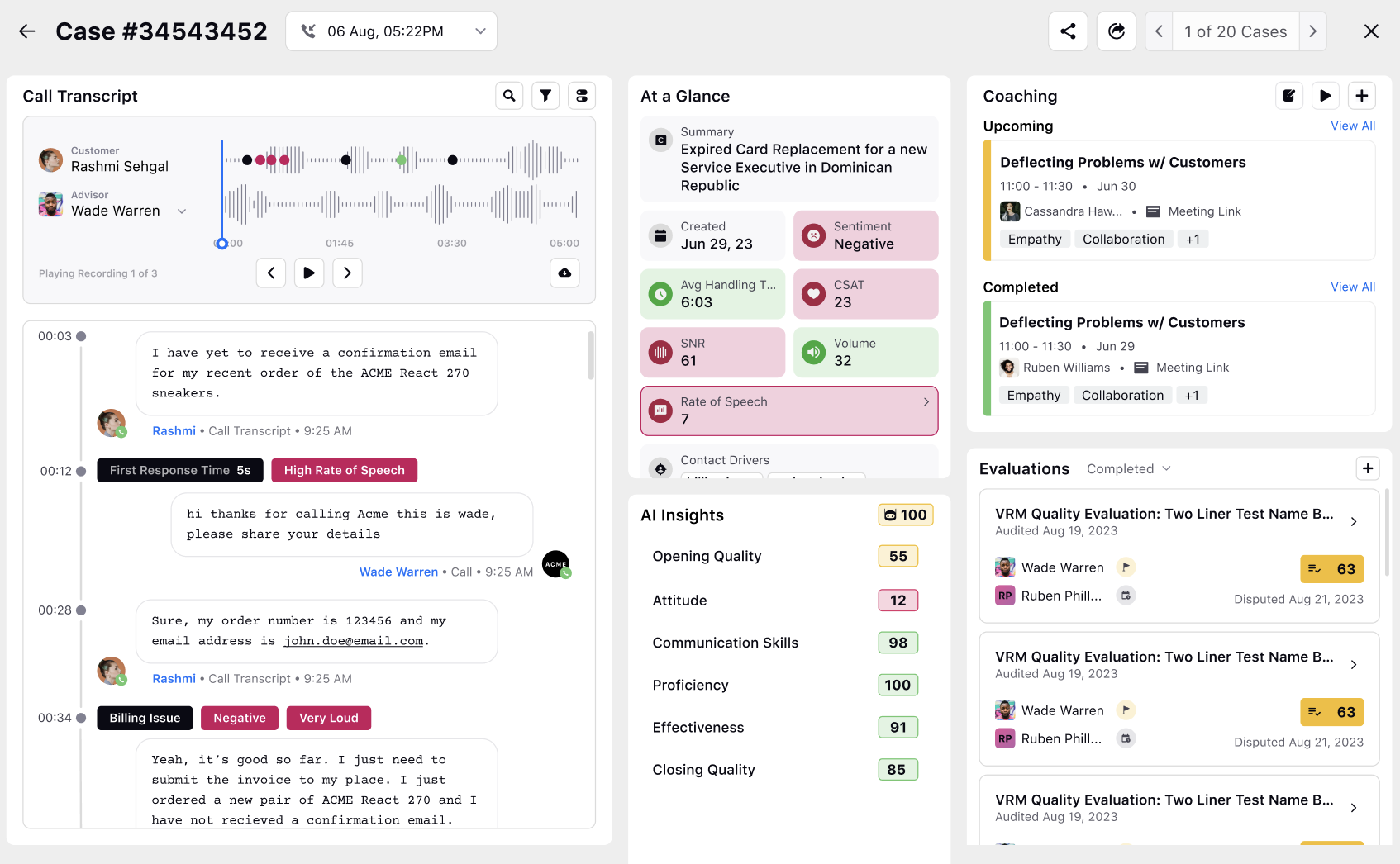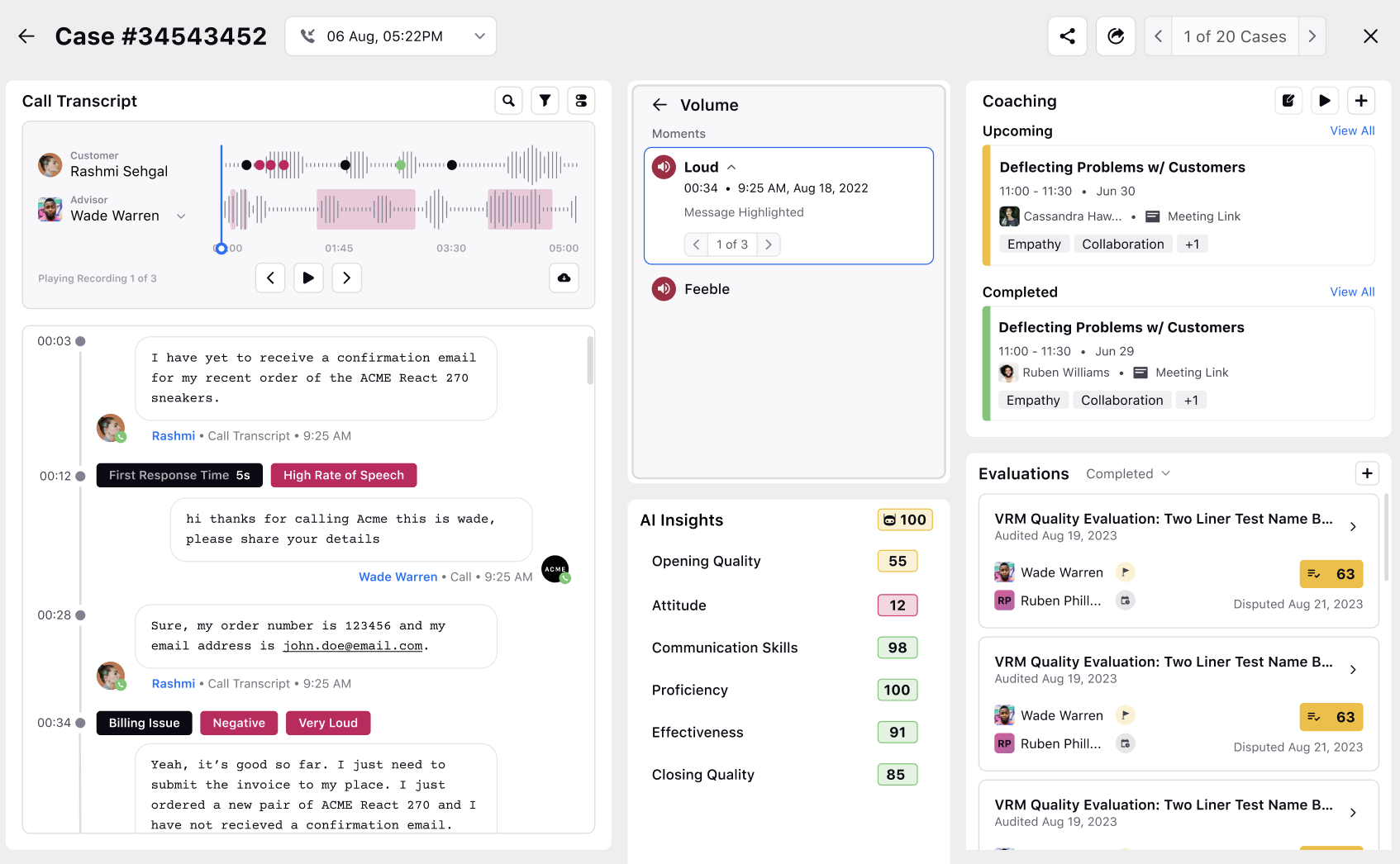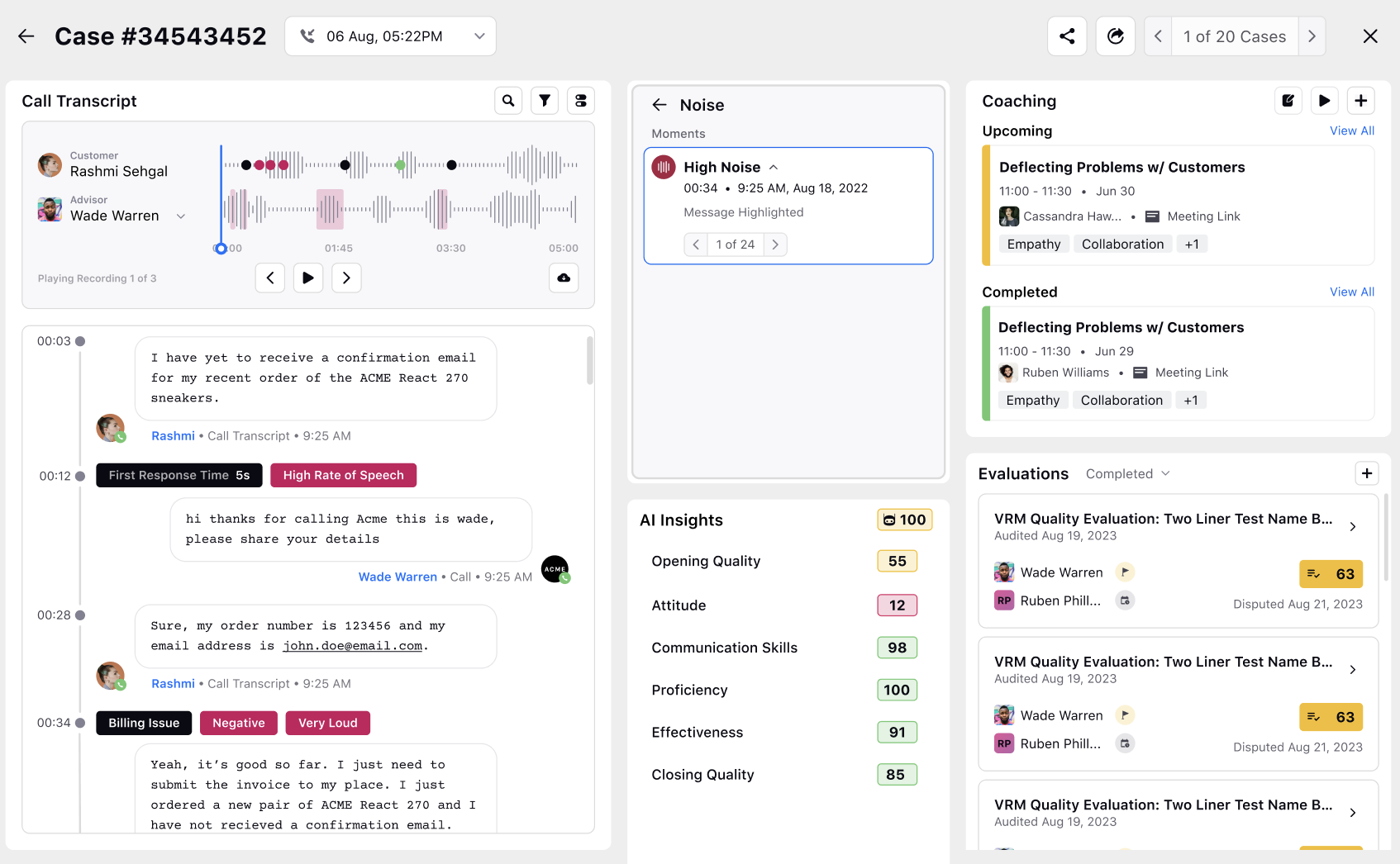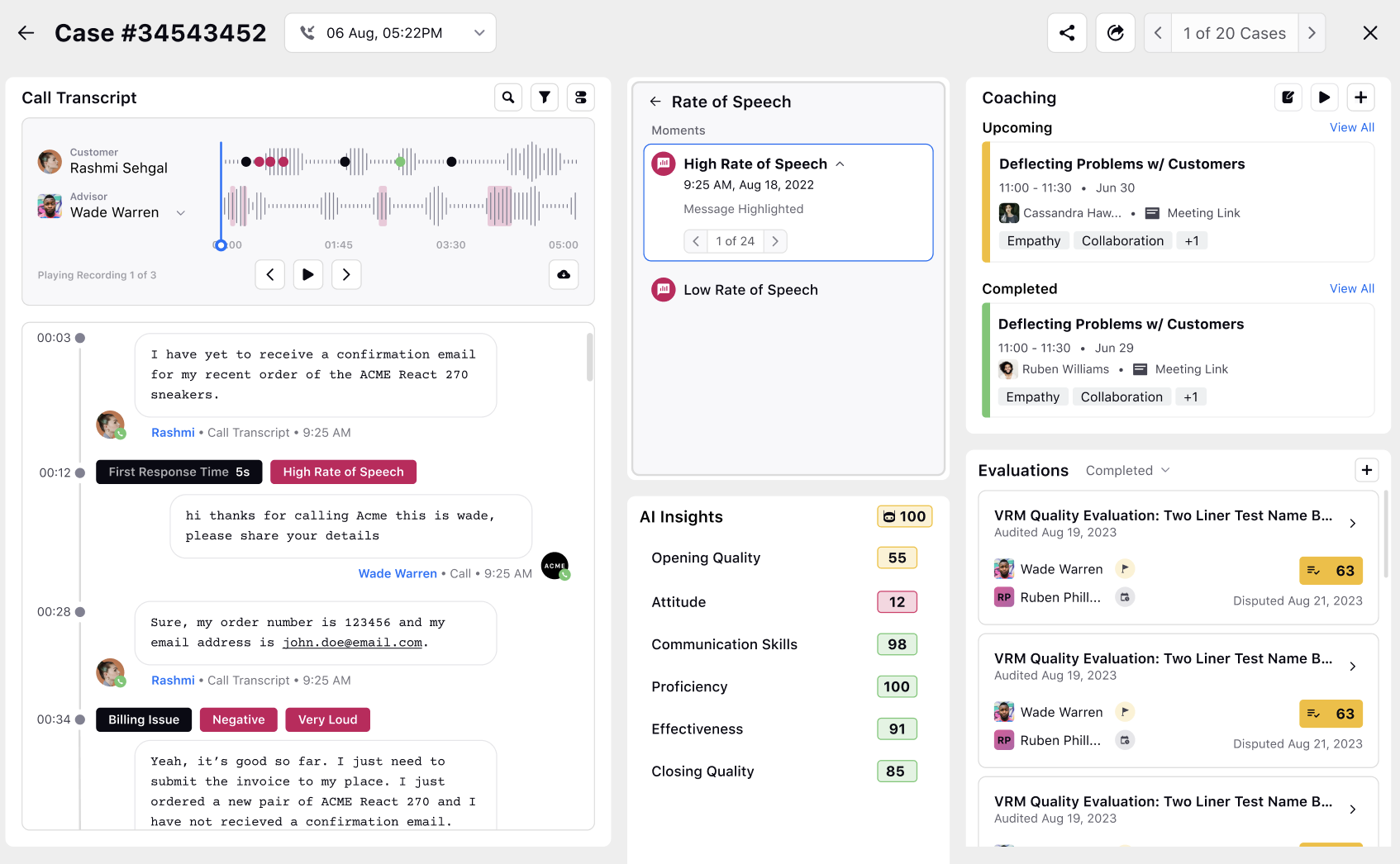Noise, Volume, Rate of Speech Detection
Updated
AI identifies noise, volume and rate of speech indicators in the voice of both customers and agents.

Volume
In audio processing, "loudness" refers to the perceptual intensity or volume of a sound. A loud message indicates a higher volume, making it more prominent. Conversely, a "feeble" or quiet message suggests a lower volume, making it less noticeable in comparison to louder elements in the audio.
The height of the bar displayed in the voice timeline within the Case Analytics view is proportionate to the loudness of a message. If the bar represents a single message, it indicates the message's loudness; if the bar includes multiple messages, it reflects the weighted average of their loudness.
When the loudness of an individual message surpasses a predefined threshold (ranging from 0 to 100; configuration available through Sprinklr Support at tickets@sprinklr.com), it is visually represented by widening the bar in the horizontal timeline, creating a distinct moment.

SNR
SNR is a measure used in audio analysis to assess the quality of a signal by comparing it to the level of background noise. A higher SNR indicates a clearer and more discernible signal, while a lower SNR suggests that the signal is more challenging to distinguish from the surrounding noise.
If the SNR of an individual message exceeds a specific threshold (ranging from 0 to 100; configuration available through Sprinklr Support at tickets@sprinklr.com), a dedicated moment is generated for each such message, hovering over which provides the actual SNR value.

Rate of Speech
The rate of speech in voice calls pertains to the speed at which a person talks, usually measured in words per minute. It plays a crucial role in communication clarity and can differ based on context and individual habits.
The threshold for a High Rate of Speech is when RoS (Rate of Speech) is greater than or equal to 4 words per second, and a Low Rate of Speech is when RoS is less than or equal to 2 words per second.
